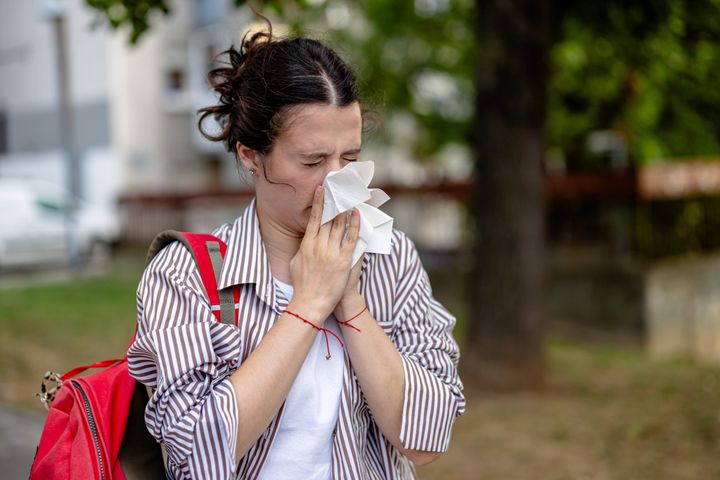
Those with hay fever are likely already dreading the beginning of spring, as the pollen that flowers, grasses, and trees release during the warmer seasons is set to fill the air.
Hay fever, also known as allergic rhinitis, happens when someone with the condition is exposed to something their system reacts to, like pollen, animal dander, or dust mites.
And while many of us associate the condition with spring, Max Wiseberg, allergen expert for HayMax, explains that many people are complaining of symptoms earlier in the year than usual.
This is because some species ― especially trees ― are flowering, thus releasing pollen, earlier than usual.
Why is this happening?
As with most maladies in the UK, it’s to do with the weather.
“I have heard of alder trees already pollinating earlier than usual and reports that people are already experiencing hay fever symptoms. This has been triggered by the mild spell of weather and a mild winter,” Wiseberg explained.
“It looks like birch pollen – one of the worst for hay fever sufferers – is also going to be released a couple of weeks early.”
How can I prevent, or improve, symptoms?
You can check the pollen count alongside the weather ― if this is running high, it might be a good idea to limit your outdoor activities on that day if possible.
You can also minimise exposure to pollen by applying petroleum jelly or an allergen barrier balm around your nostrils to trap pollen. Wear wrap-around sunglasses to prevent pollen from getting into your eyes, and after being outside, shower and change your clothes to wash pollen off your body.
Opt to stay indoors whenever possible. Additionally, keep windows and doors shut as much as possible to prevent pollen from entering your home. Over-the-counter antihistamines can also help.
The NHS advises you to see a GP if your symptoms do not improve, or if they get worse, after taking precautions and medication.
Ah, the joys of spring...